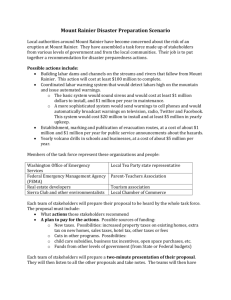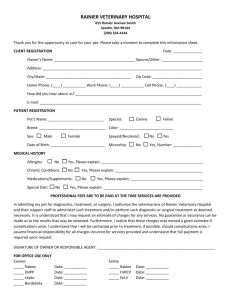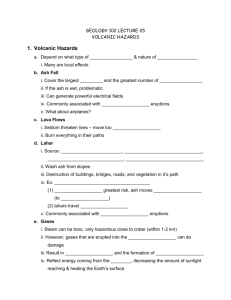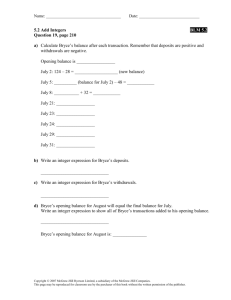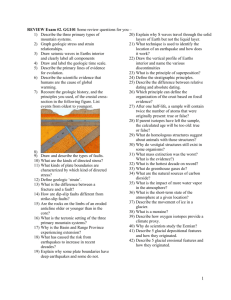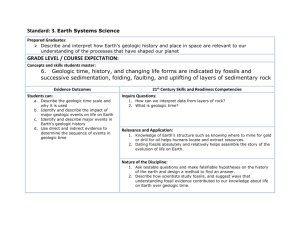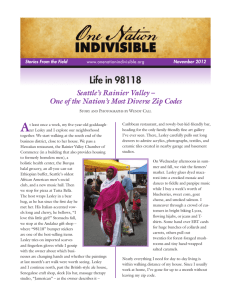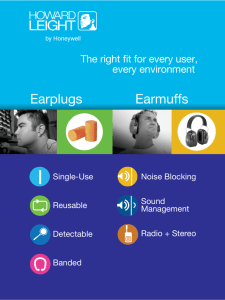Test #2
advertisement
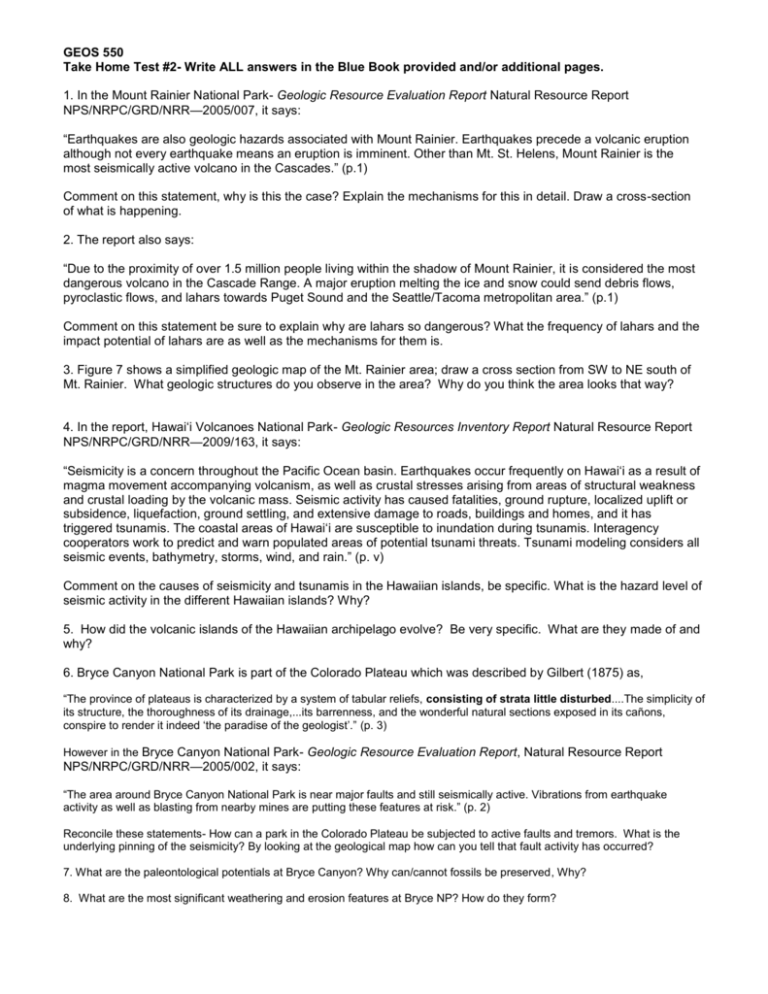
GEOS 550 Take Home Test #2- Write ALL answers in the Blue Book provided and/or additional pages. 1. In the Mount Rainier National Park- Geologic Resource Evaluation Report Natural Resource Report NPS/NRPC/GRD/NRR—2005/007, it says: “Earthquakes are also geologic hazards associated with Mount Rainier. Earthquakes precede a volcanic eruption although not every earthquake means an eruption is imminent. Other than Mt. St. Helens, Mount Rainier is the most seismically active volcano in the Cascades.” (p.1) Comment on this statement, why is this the case? Explain the mechanisms for this in detail. Draw a cross-section of what is happening. 2. The report also says: “Due to the proximity of over 1.5 million people living within the shadow of Mount Rainier, it is considered the most dangerous volcano in the Cascade Range. A major eruption melting the ice and snow could send debris flows, pyroclastic flows, and lahars towards Puget Sound and the Seattle/Tacoma metropolitan area.” (p.1) Comment on this statement be sure to explain why are lahars so dangerous? What the frequency of lahars and the impact potential of lahars are as well as the mechanisms for them is. 3. Figure 7 shows a simplified geologic map of the Mt. Rainier area; draw a cross section from SW to NE south of Mt. Rainier. What geologic structures do you observe in the area? Why do you think the area looks that way? 4. In the report, Hawai‘i Volcanoes National Park- Geologic Resources Inventory Report Natural Resource Report NPS/NRPC/GRD/NRR—2009/163, it says: “Seismicity is a concern throughout the Pacific Ocean basin. Earthquakes occur frequently on Hawai‘i as a result of magma movement accompanying volcanism, as well as crustal stresses arising from areas of structural weakness and crustal loading by the volcanic mass. Seismic activity has caused fatalities, ground rupture, localized uplift or subsidence, liquefaction, ground settling, and extensive damage to roads, buildings and homes, and it has triggered tsunamis. The coastal areas of Hawai‘i are susceptible to inundation during tsunamis. Interagency cooperators work to predict and warn populated areas of potential tsunami threats. Tsunami modeling considers all seismic events, bathymetry, storms, wind, and rain.” (p. v) Comment on the causes of seismicity and tsunamis in the Hawaiian islands, be specific. What is the hazard level of seismic activity in the different Hawaiian islands? Why? 5. How did the volcanic islands of the Hawaiian archipelago evolve? Be very specific. What are they made of and why? 6. Bryce Canyon National Park is part of the Colorado Plateau which was described by Gilbert (1875) as, “The province of plateaus is characterized by a system of tabular reliefs, consisting of strata little disturbed....The simplicity of its structure, the thoroughness of its drainage,...its barrenness, and the wonderful natural sections exposed in its cañons, conspire to render it indeed ‘the paradise of the geologist’.” (p. 3) However in the Bryce Canyon National Park- Geologic Resource Evaluation Report, Natural Resource Report NPS/NRPC/GRD/NRR—2005/002, it says: “The area around Bryce Canyon National Park is near major faults and still seismically active. Vibrations from earthquake activity as well as blasting from nearby mines are putting these features at risk.” (p. 2) Reconcile these statements- How can a park in the Colorado Plateau be subjected to active faults and tremors. What is the underlying pinning of the seismicity? By looking at the geological map how can you tell that fault activity has occurred? 7. What are the paleontological potentials at Bryce Canyon? Why can/cannot fossils be preserved, Why? 8. What are the most significant weathering and erosion features at Bryce NP? How do they form?
